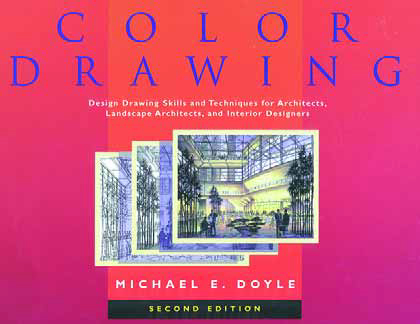ARTICLES
Advance Search
Aquatic Health
Aquatic Health, Fitness & Safety
Around the Internet
Aquatic Culture
Aquatic Technology
Artful Endeavors
Celebrity Corner
Life Aquatic
Must-See Watershapes
People with Cameras
Watershapes in the Headlines
Art/Architectural History
Book & Media Reviews
Commentaries, Interviews & Profiles
Concrete Science
Environment
Fountains
Geotechnical
Join the Dialogue
Landscape, Plants, Hardscape & Decks
Lighter Side
Ripples
Test Your Knowledge
The Aquatic Quiz
Other Waterfeatures (from birdbaths to lakes)
Outdoor Living, Fire Features, Amenities & Lighting
Plants
Ponds, Streams & Waterfalls
Pools & Spas
Professional Watershaping
Structures (Editor's Notes)
Travelogues & History
Water Chemistry
WaterShapes TV
WaterShapes World Blog
Web Links
Around the Internet
Aquatic Culture
Aquatic Technology
Artful Endeavors
Celebrity Corner
Life Aquatic
Must-See Watershapes
People with Cameras
Watershapes in the Headlines
Lately I've been finding myself in what seems like a fairly unique position: On the one hand, I work as a design consultant for architects and as a designer for high-end customers; on the other, I work as a builder executing the designs that customers and their architects choose. In this dual capacity, I've been able to gather a tremendous amount of input from construction clients and transfer it in one form or another as a consultant. I also have had the opportunity of seeing how decisions made in the design process play out during the construction process. Seeing both sides has led me to certain conclusions, chief among them
Throughout recorded history, great societies have built monuments to celebrate their victories, commemorate their tragedies and express their guiding ideals. Through creation of these great works of art or
It's one of the most famous buildings in the world, but few people know that Frank Lloyd Wright designed Fallingwater in a matter of hours. In 1935, when Wright first received the commission to design and build a vacation home for Pittsburgh retail tycoon Edgar J. Kaufman and his family in Mill Run, Pa., he didn't get to the project right away. After several months of preliminary discussions and delays, Kaufman decided to force the issue, telephoning the architect and saying that he was going to visit Wright's studio to see what had been done. It was at that point Wright decided he'd better design the house. He had a weekend. The construction process was no more direct, but it took longer. Work began in 1936 and was completed by 1939 in a series of costly fits and starts. The project was originally set to cost in the neighborhood of $40,000, but the final tally rose to nearly ten times that amount - not inconsiderable in post-Depression America. The result of the dramatic (and, at times, traumatic) process of design and construction is nothing less than one of the greatest achievements in American architecture, a work so compelling that it never stops
It's one of the most famous buildings in the world, but few people know that Frank Lloyd Wright designed Fallingwater in a matter of hours. In 1935, when Wright first received the commission to design and build a vacation home for Pittsburgh retail tycoon Edgar J. Kaufman and his family in Mill Run, Pa., he didn't get to the project right away. After several months of preliminary discussions and delays, Kaufman decided to force the issue, telephoning the architect and saying that he was going to visit Wright's studio to see what had been done. It was at that point Wright decided he'd better design the house. He had a weekend. The construction process was no more direct, but it took longer. Work began in 1936 and was completed by 1939 in a series of costly fits and starts. The project was originally set to cost in the neighborhood of $40,000, but the final tally rose to nearly ten times that amount - not inconsiderable in post-Depression America. The result of the dramatic (and, at times, traumatic) process of design and construction is nothing less than one of the greatest achievements in American architecture, a work so compelling that it never stops
From the start, this project was meant to be something truly special - a monument symbolizing the ambition of an entire community as well as a fun gathering place for citizens of Cathedral City, Calif., a growing community located in the desert near Palm Springs. "The Fountain of Life," as the project is titled, features a central structure of three highly decorated stone bowls set atop columns rising into the desert sky. Water tumbles, sprays and cascades from these bowls and other jets on the center structure, spilling onto a soft surface surrounding the fountain. All around this vertical structure are sculpted animal figures - a whimsical counterbalance that lends a light touch to the composition and opens the whole setting to children at play. I've been building stone fountains for 18 years, and I've never come across anything even close to this project with respect to either size or sheer creativity. Making it all happen took an unusually high degree of collaboration on the part of the city, the artist, the architects and a variety of
From the start, this project was meant to be something truly special - a monument symbolizing the ambition of an entire community as well as a fun gathering place for citizens of Cathedral City, Calif., a growing community located in the desert near Palm Springs. "The Fountain of Life," as the project is titled, features a central structure of three highly decorated stone bowls set atop columns rising into the desert sky. Water tumbles, sprays and cascades from these bowls and other jets on the center structure, spilling onto a soft surface surrounding the fountain. All around this vertical structure are sculpted animal figures - a whimsical counterbalance that lends a light touch to the composition and opens the whole setting to children at play. I've been building stone fountains for 18 years, and I've never come across anything even close to this project with respect to either size or sheer creativity. Making it all happen took an unusually high degree of collaboration on the part of the city, the artist, the architects and a variety of
This project is all about making connections - connections between the inside of a home and the outdoors; between surrounding wide-open spaces and an intimate backyard; between the colors of the hillsides and the materials used in crafting the watershape; between the clients' desire for recreation and their passion for beauty; and between the beauty of nature and the modern, sculptural lines of the design. If you've followed my "Details" column in WaterShapes in recent months, you've seen many of the components that have been incorporated into this particular
Whether you choose to replicate old stone structures or borrow ideas and transplant them into contemporary designs, there is certainly a treasure trove of design concepts to be found in the masterworks of those who've gone before us. Indeed, stone has been the raw material of choice for many of the world's greatest architects, landscapers and watershapers, each of whom has relied on stone and its timelessness in fashioning works of beauty. In the first two articles in this series, we toured
Among the most useful and influential books I've read in my career as a landscape architect and watershape designer is Color Drawing by Michael E. Doyle (John Wiley & Sons, 2nd edition, 1999). I went in to landscape architecture mainly because I wanted to learn to do beautiful hand-drawn renderings and presentations. I'd started drafting in 7th grade, always really enjoyed the process and, even though I'm far from a great natural talent, have always seen drawing as a
I live in the Rocky Mountains of Colorado on the banks of the Arkansas River - a beautiful place and a beautiful river. Within easy reach of my home, the Arkansas flows swiftly in certain spaces, cascading over rugged terrain, then slows down in others to form deep pools that reflect brilliant skies and create a diversity of aquatic habitats. As I watch the river flow, sometimes I can't help thinking back to my days at a trout hatchery and recognizing that if we'd had such a volume of moving water available to us in our operation, we could have produced millions more pounds of healthy fish. I'm simply amazed by the power and complexity of the water I watch, and especially by its ability to




















